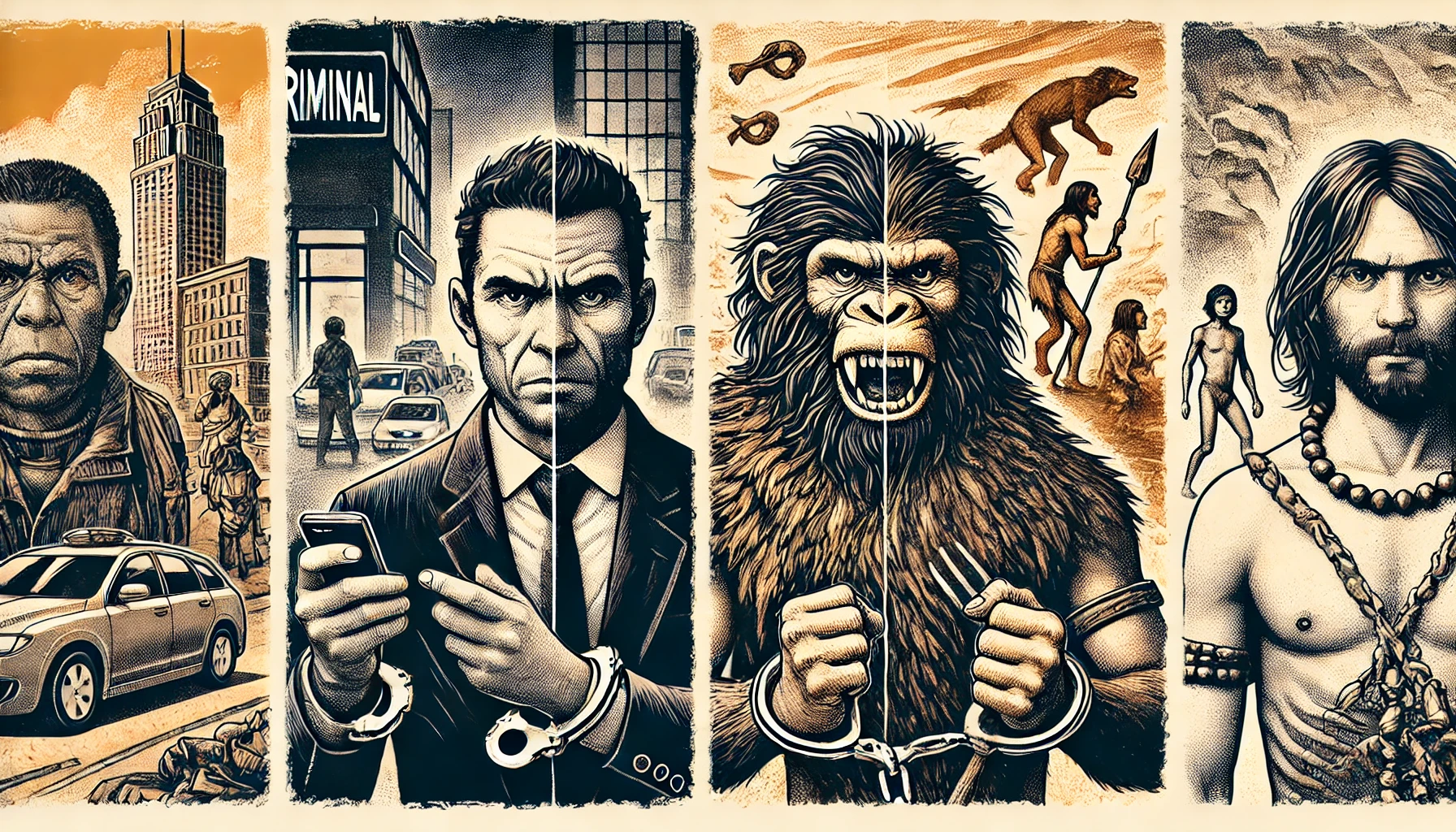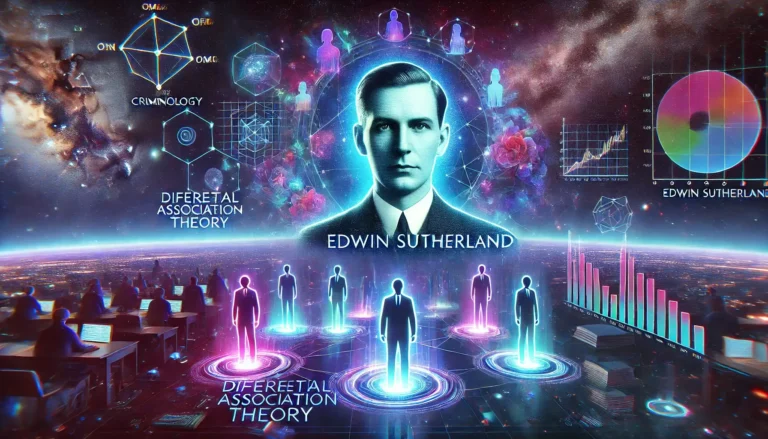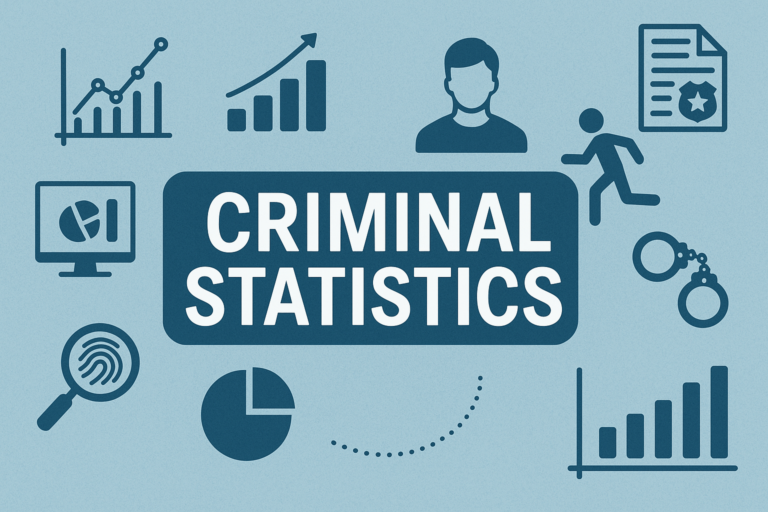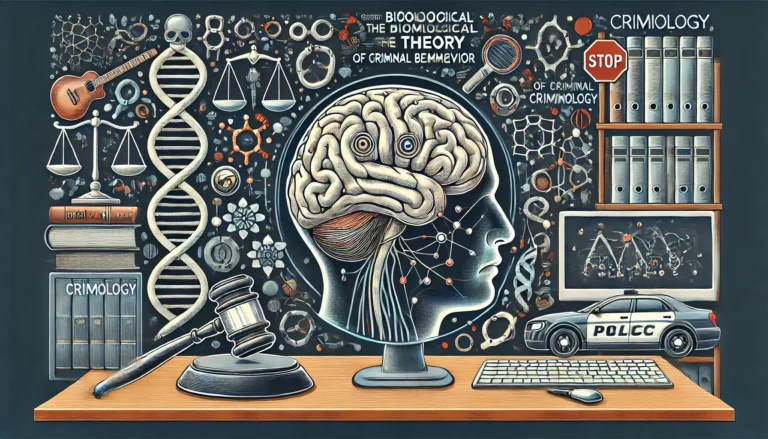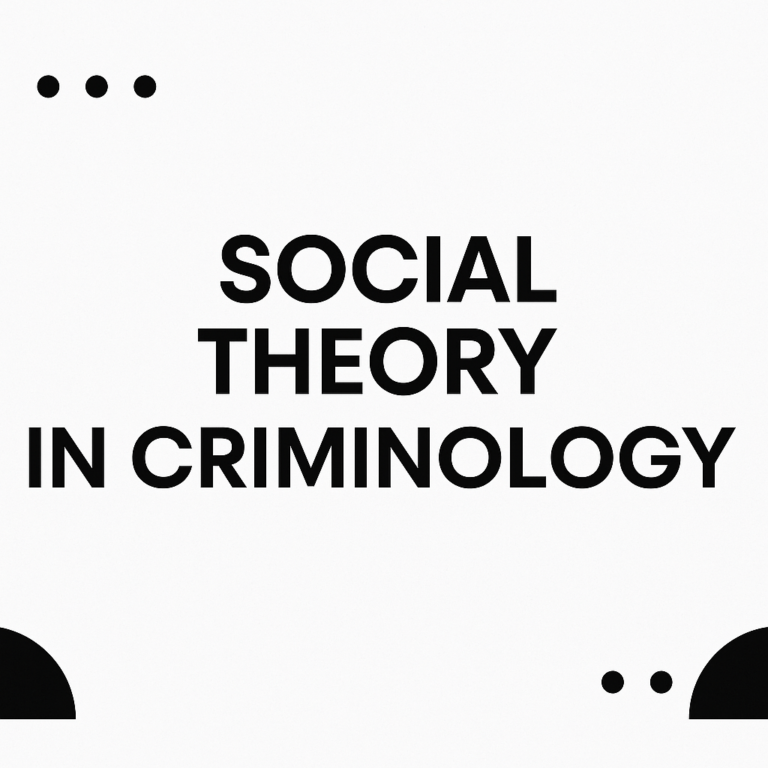Comparison Between Criminal and Primitive Man
Introduction
- Hook: Are criminals a throwback to an earlier stage of human evolution? This question has intrigued criminologists and anthropologists for centuries.
- Thesis Statement: This article explores the similarities and differences between criminals and primitive humans, analyzing biological, psychological, and sociological aspects to understand whether criminal behavior reflects primal instincts or modern societal failures.
1. Historical Background
- Early Theories:
- Cesare Lombroso’s concept of the “born criminal” and his comparison to primitive humans.
- Anthropological perspectives on primitive humans as the baseline for human evolution.
- Criticism of Lombroso:
- Scientific inaccuracies and ethical concerns with labeling criminals as evolutionary regressions.
2. Biological Comparisons
- Physical Characteristics:
- Lombroso’s observations of atavistic features (e.g., prominent jaw, high cheekbones).
- Similarities in physical traits attributed to survival in harsh environments.
- Brain Structure and Function:
- Primitive humans: Focused on basic survival instincts.
- Criminals: Theories linking impulsivity and aggression to brain function abnormalities.
3. Psychological Parallels
- Survival Instincts:
- Primitive humans relied on aggression for survival, similar to some criminal behaviors.
- Impulsivity and Lack of Future Planning:
- Primitive humans lived in the moment, with limited long-term planning.
- Criminal behavior often reflects a similar lack of foresight.
- Social and Emotional Intelligence:
- Primitive humans had basic social structures; modern criminals may show underdeveloped empathy.
4. Sociological Aspects
- Role in Society:
- Primitive humans: Hunters, gatherers, and protectors.
- Criminals: Often marginalized or rebellious against societal norms.
- Conflict Resolution:
- Primitive humans: Violence was a common method of resolving disputes.
- Criminals: Resorting to violence or law-breaking to address grievances.
5. Evolutionary Perspectives
- Crime as an Evolutionary Strategy:
- How stealing, aggression, and deceit might have offered advantages in primitive times.
- Modern Society’s Influence:
- Criminality as a response to inequality, oppression, or lack of resources.
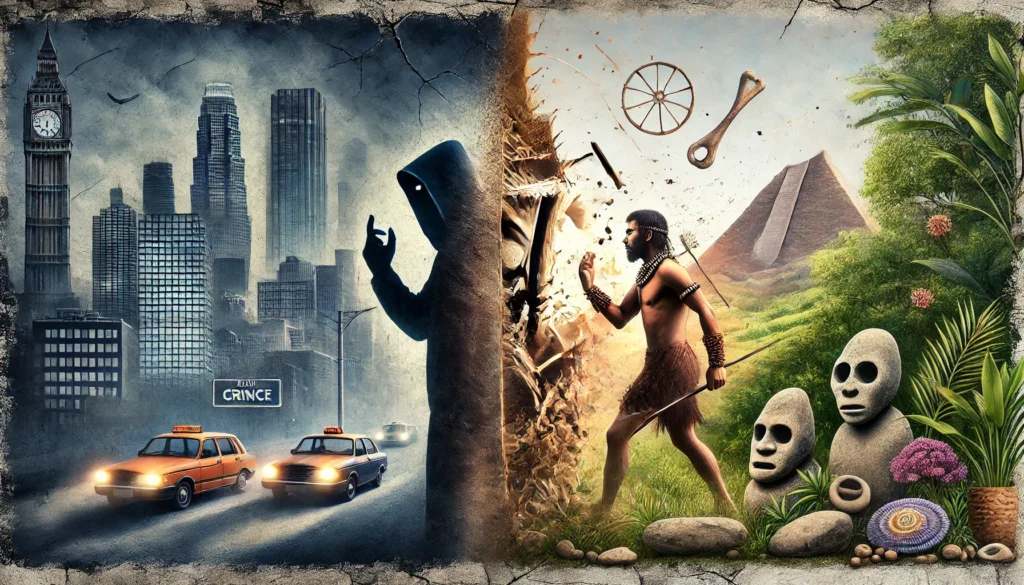
6. Differences Between Primitive Man and Criminal Behavior
- Intent and Morality:
- Primitive humans acted for survival, not malice.
- Criminals often act with awareness of societal norms but choose to defy them.
- Integration in Society:
- Primitive humans were integral to their communities, while criminals are often excluded or punished.
7. Anthropological and Criminological Insights
- Cultural Evolution:
- Primitive societies gradually developed norms that curbed violence and promoted cooperation.
- Criminal behavior reflects a deviation from these evolved norms.
- Modern Implications:
- How understanding primal instincts can help in rehabilitation and crime prevention.
8. Critiques and Modern Viewpoints
- Rejection of Simplistic Comparisons:
- Modern criminologists emphasize the complexity of criminal behavior.
- Socioeconomic Factors:
- Crime as a product of structural inequalities rather than biological regression.
Conclusion
- Summary: While criminals and primitive humans share certain instincts and behaviors, their motivations and societal contexts differ significantly.
- Reflection: Studying this comparison sheds light on human behavior, societal development, and the nature of crime.

